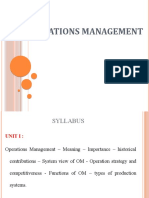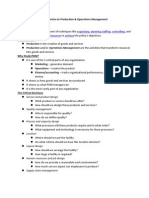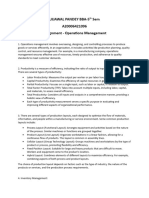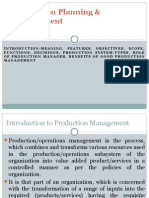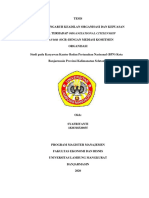0% found this document useful (0 votes)
43 views12 pagesProduction & Operations Guide
Production and Operation Management involves strategic, tactical, and operational decisions to transform resources efficiently into goods and services. It covers various aspects from capacity planning and process design to facility location and advanced manufacturing concepts. By understanding these principles and implementing modern techniques, businesses can enhance productivity and responsiveness.
Uploaded by
Farzan MatherCopyright
© © All Rights Reserved
We take content rights seriously. If you suspect this is your content, claim it here.
Available Formats
Download as PDF, TXT or read online on Scribd
0% found this document useful (0 votes)
43 views12 pagesProduction & Operations Guide
Production and Operation Management involves strategic, tactical, and operational decisions to transform resources efficiently into goods and services. It covers various aspects from capacity planning and process design to facility location and advanced manufacturing concepts. By understanding these principles and implementing modern techniques, businesses can enhance productivity and responsiveness.
Uploaded by
Farzan MatherCopyright
© © All Rights Reserved
We take content rights seriously. If you suspect this is your content, claim it here.
Available Formats
Download as PDF, TXT or read online on Scribd
/ 12



















